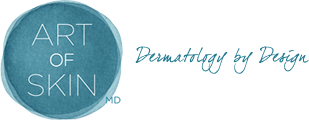 Proper Skincare Layering by Dr. Palm: What’s the Deal with Skincare Layering?
Proper Skincare Layering by Dr. Palm: What’s the Deal with Skincare Layering?
Introduction to proper skincare and layering cosmeceutical products
Recently, I shared my advice for properly layering skincare with Sportluxe. This question is frequently asked by my patients. Proper Skincare layering is complex but easy to understand when explained. I’m always happy to provide my best skincare tips and tricks. How do you choose the right consistency of skincare for your skin? What do you apply morning versus night? Are there ingredients in skincare products and cosmeceuticals that neutralize or negate the effects of other active ingredients? Read on!
Dr. Palm’s Q&A Guide to Great Outcomes with Skincare
-
Which ingredients/products should you NOT layer?
Generally speaking, you want to combine like with like. Proper skincare layering by Dr. Palm (my recommendations) involves bringing like things together. Lighter formulations like gels and serums combine well together. Ointments and some creams, as heavier emollients, may do well. Be careful with oils – although I like them, they may cause some other skincare topicals or makeup to separate.
In terms of avoiding combinations, do not combine benzoyl peroxide with most anti-aging topicals. BP can inactivate the free-radical fighting ability of ascorbic acid, and it can neutralize retinol and retinoid activity. Benzoyl peroxide can also eliminate the ability of certain brightening ingredients, such as hydroquinone, to work by oxidizing the molecule. If you have acne prone skin and want to use vitamin C, consider substituting out to a salicylic acid wash instead of BP to preserve the antioxidant ability of vitamin C.
Be careful about applying to many anti-aging products together, especially if you have sensitive skin. Combining bakuchiol and retinol is great for normal to oily skin, but may cause significant increased skin turnover and irritation in more sensitive skin types. Combining glycolic, salicylic acid and retinoid may also increase irritation and flaking. Also ask your dermatologist about combination of some prescription products with topical OTC skincare. Some acne medications can cause other topicals to not work, or oxidize themselves, causing a yellow discoloration on the skin.
-
What negative effects could come to your skin by layering the above ingredients?
In general, proper skincare layering by Dr. Palm (per my recommendations) avoids negative effects. Layering incompatible skincare products decrease good outcomes. You have a great habit, but use good combos of skincare products. Otherwise, active ingredients may not work effectively, or skin irritation may increase.
-
What ingredients/products can/should you layer?
As I mentioned product wise, like products in terms of base or vehicle combine well with others. Creams combine well with lotions or creams. Gels, serums, and whips often do well together.
Combining topical antioxidants like vitamin C with a glycolic is great – the latter helps drive the ascorbic acid into the skin.
I also like combining peptides or growth factors with a retinol or retinoid. The former often helps calm skin and gently build collagen, while the vitamin A derivates help more robustly improve the dermis. Using this combination of skincare products is the key to proper skincare layering.
Always combine your sunscreen with active products to guard against free radical damage, high energy visible light (like blue light from our smart devices), and infrared light. Vitamin C, polyphenols, and DNA repair enzymes all can be helpful in actively combating or reversing skin damage.
Bakuchiol, an active molecule derived from an Asian plant and seed is really interesting and has been used for a several years in some product lines like Revision, ISDIN, and Topix. On its own, bakuchiol performs like a mild retinol, increasing skin turnover and collagen renewal by upregulating retinol receptors in the skin. However, unlike retinols, it tends to be far less irritating on the skin. If you want a boost to your retinol or retinoid, bakuchiol actually AUGMENTS the effects of vitamin A derivatives, so they work synergistically to further boost anti-aging of the skin with relatively milder skin irritation.
-
What is the ideal product application order? Start to finish for both AM and PM.
Whether it is AM or PM, start with lighter products first, then layer through heavier formulations. Proper skincare layering rules by Dr. Palm will differing depending on your morning versus nighttime skin routine.
AM: Start with clean face. After cleansing, I don’t necessarily believe patients need a toner, unless it is specifically formulated to adjust pH to the skin, usually between 4.5-5.5. Layer on antioxidant topical, or anti-inflammatory topical of choice, then moisturizer, then sunscreen, then makeup.
PM: Start with clean face. Consider an ultrasonic cleansing device to remove makeup and debris from the day. Use prescription products first on the face, lighter to heavier. Afterwards, consider a moisturizer or additional nighttime products.
-
Should you take mini breaks between each product application to allow for full absorption? or apply one after the other?
If products are well-formulated with vehicles and active ingredients that don’t compete or degrade with one another, you can layer on one right after the other, or even mix products in the palm of your hand prior to applying on your face and neck. It is perhaps as important to ensure that you are applying your topical skincare products to a clean canvas. I strongly suggest that patients use a sonicating facial cleansing brush like the Clarisonic Mia Smart, to effectively remove dead skin cells, excess sebum, and even environmental debris. Topical skincare works best with even application, and a clean, smooth surface with an effective cleansing tool is key to beginning this process.
I think it is a lot to ask and extremely high maintenance to expect my patients to wait 5 or 10 minutes between different topical skincare product applications. There is simply no scientific published data to support prolonging the application process.
-
Must-have ingredients/products for your layering skincare routine?
Start with good, clean skin. As I mentioned previously, using a facial cleansing device like a Clarisonic provides an excellent base for topical skincare application. For patients using a retinol or product that turns skin over more quickly, you could also consider a gommage, a topical gel that links to dead keratin and removes sloughing skin without irritation.
The layering ingredients and formulations purely depend on an individual’s skincare needs. This could differ widely between sensitive, dry, oily, combination, or acne prone skin. Sensitive and dry skin types benefit from thicker formulations with active skin reparative and moisturizing ingredients such as ceramides, triglycerides, cholesterol, glycerin, or squalane.
Acne or oily prone skin types benefit typically from mattifying products, oil-absorbing products, and products that help decrease oil production and decrease inflammation in the pores, where acne starts. Gels, serums, and lighter whipped products might be advised, with ingredients such as salicylic acid, willow bark, sulfur, or niacinamide to combat breakouts and control oil.
Normal skin or those desiring collagen boosting have lots of choices in terms of formulations and ingredients because their skin often tolerates a variety of products. Considering an alpha- or polyhydroxyacid and antioxidant such as vitamin C are important for daytime skincare. At night, ingredients like retinol or retinoids combined with bakuchiol or peptides are ideal for the circadian rhythm of the skin and nocturnal renewal processes.
Sensitive skin types should be very careful about ingredient lists. Avoid fragrances, harsh anti-aging products and sometimes even vitamin C, which I usually love for most skin types. Sensitive skin types often thrive with milky or quickly absorbing formulations that focus on anti-inflammation and gentle skin renewal. Green tea, niacinamide, ceramides, peptides, and growth factors could be good active ingredients to search for on the label.
For all of our Lovely Art of Skin MD patients:
Remember that our cyber sale is still active during COVID-19 shelter in place orders here in California. For a limited time, we are offering 20% off all non-prescription skincare products and FREE SHIPPING off orders over $200!
Contact Art of Skin MD by ordering online in our SHOP, or call us at 858.792.7546 or email info@artofskinmd.com . Stay safe!


